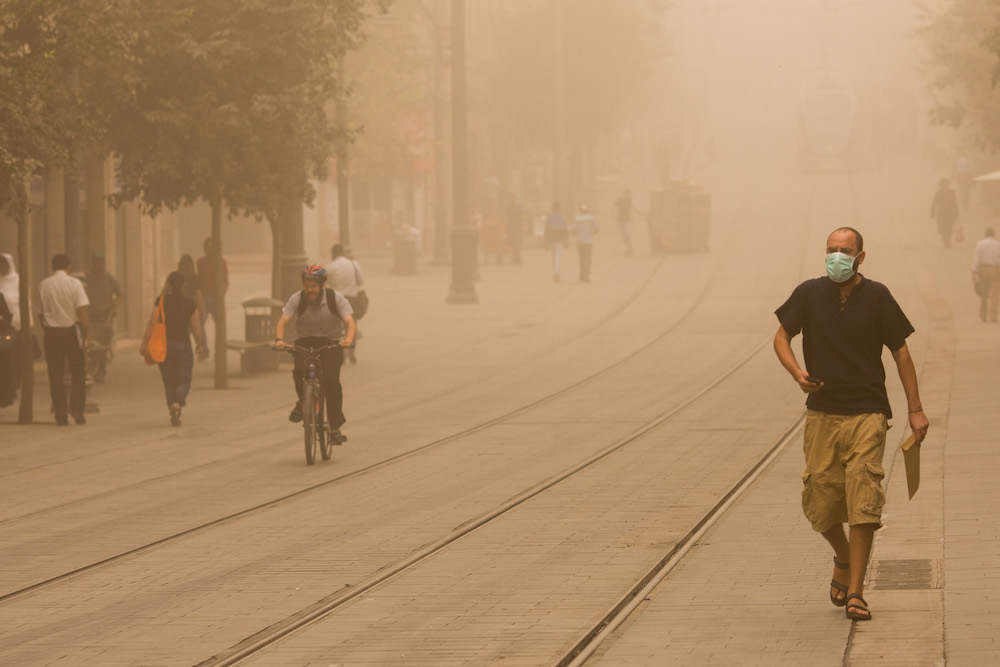July 2019 was, according to European climate researchers, the hottest month ever recorded. Coming just one year after the UN’s Intergovernmental Panel on Climate Change released its landmark report warning of an impending climate catastrophe, temperatures soared to unprecedented levels in places like Alaska and Sweden, forests incinerated in Siberia, glaciers melted in Greenland, and entire cities in India went without water.
Faced with rising temperatures, addressing climate breakdown and its effects on humanity has become a key issue for governments, politicians, and movements for social justice around the world. Israel-Palestine, located in one of the hottest regions of the globe, is expected to warm at an even faster pace.
Polling among Israelis shows a great deal of indifference to the coming crisis, which means the Israeli government is facing little popular pressure on the issue. No equivalent research has been done in the occupied Palestinian territories but the ongoing occupation of the West Bank and siege on Gaza at once compound the risk of climate catastrophe for Palestinians, and make it virtually impossible for their government to do anything about it.
Late last year, a group of Israeli researchers published the first detailed forecast of what climate change could mean for Israel-Palestine. The results were frightening: relative to the benchmark period of 1981–2010, the 30-year period beginning in 2041 is expected to see average temperatures rise up to 2.5 degrees Celsius, and a drop in precipitation of up to 40 percent in non-arid parts of the country.
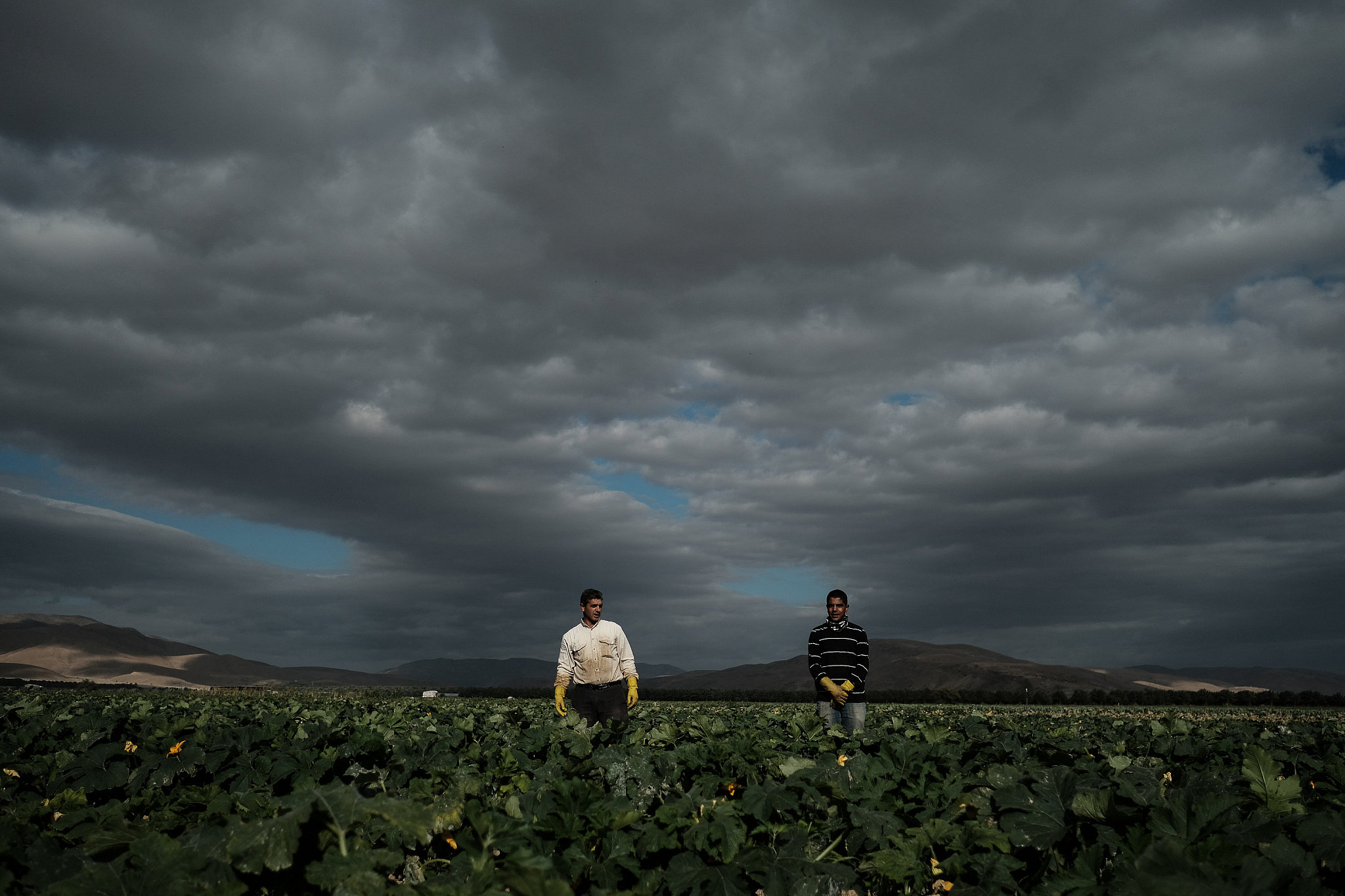
According to one of the researchers, professor Hadas Saaroni of Tel Aviv University, the heat and humidity Israelis and Palestinians living along the coast experience during the summer months will only grow more extreme. We already have almost 24 hours of heat stress in the summertime, she says, but it tends to lessen in the evening and nighttime hours. “That will get worse: the heat stress will be heavy in the daytime and won’t let up at night.” And like nearly everything related to climate change, the heat won’t be equally distributed. Recent research by the Tel Aviv-Jaffa Municipality predicts that temperatures in the poorer south of the city will be up to seven degrees Celsius higher than in its affluent north.
While Saaroni is surprisingly sanguine about the effects of climate change on sea level rise (“the sea will rise by about one meter, but only by the end of the century. With technology we have time to adjust.”), she and other Israeli climate scientists are increasingly worried about the creeping desertification of the country. Higher temperatures and less rainfall mean that the desert, which already covers most of the country, will creep steadily north, says ecologist professor Marcelo Sternberg, also of Tel Aviv University.
Yet without further research it is difficult to say just how far desertification will proceed. “Some research, including my own, shows that our territory is resilient to changes in rainfall within the natural range of variation,” says Sternberg. “But climate change means temperatures outside that range — and we just don’t know what that will mean.” What seems certain is that wildfires, which have increasingly afflicted the country in recent years, will continue to ravage the country during the summers.
Struggling against ‘climate apartheid’
The State of Palestine is signed on to the United Nations Framework Convention on Climate Change. But due to Israel’s military rule over the West Bank and its blockade of the Gaza Strip, Palestinians have almost no control over their own natural resources, are unable to fully implement treaties or take on national projects, and cannot make concrete plans to adapt to climate breakdown.
In the West Bank, the water supply is most vulnerable to the effects of climate change. According to a 2013 report by Palestinian human rights group Al-Haq, Israeli per capita consumption of water for domestic use is four to five times higher than that of the Palestinian population of the occupied territories. Israeli settlers in the West Bank consume approximately six times the amount of water used by the Palestinian population living in the same territory.
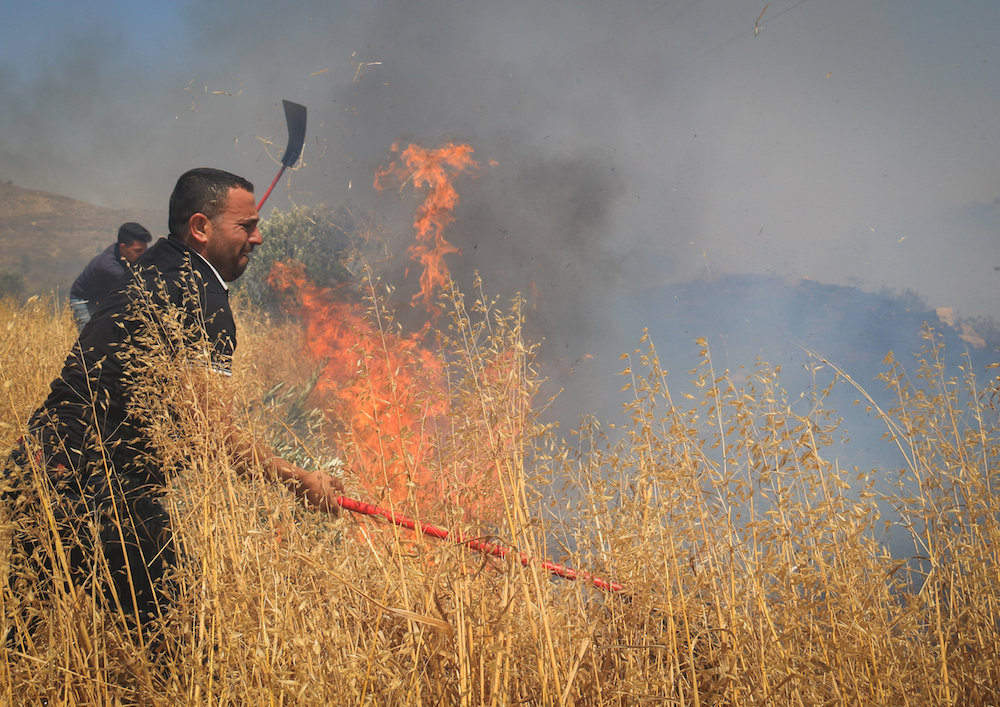
Some Palestinian communities, particularly those living in areas of the West Bank under full Israeli military control, are not connected to any water infrastructure and must travel for miles to purchase water, which is often expensive and of dubious quality. Meanwhile, the Israeli army makes it nearly impossible to approve new water cisterns, and those built without permits are routinely destroyed by the authorities.
According to Al-Haq, the water sector in the occupied territories and Israel is characterized by highly asymmetrical overexploitation of shared water resources, exhaustion of long-term storage, deterioration of water quality, and increasing levels of demand driven by high population growth. Meanwhile, the area is seeing a per capita decrease in water supply — a burden that is disproportionately borne by the Palestinian population.
Dr. Abdulrahman Tamimi, the general director of Palestinian Hydrology Group, says that while Israel has the technological ability to adapt its agricultural sector to the changes in climate, agriculture will become impracticable in the West Bank within a decade. The situation in Gaza is compounded by Israel’s siege, which among other things has led to overexploitation of groundwater resources increasingly depleting the Coastal Aquifer, all of which has rendered 90 percent of the water supply unfit for human consumption.
“There is no hope for Gaza in any aspect as long as the political situation there remains unresolved,” Tamimi argues. He says he believes that within the next five or six years Gaza’s agriculture, water infrastructure, and economy will be dysfunctional. Solutions such as desalination, which would allow for both healthy drinking water and regular irrigation, are luxuries people in Gaza simply cannot afford, Tamimi explains: “Who would pay $1.5 per cubic meter?”
“Water is already such a scarce resource in the region,” says Zena Agha, the U.S. Policy Fellow with Palestinian think tank Al-Shabaka, who focuses on the intersection of climate and Israeli occupation, “climate change simply acts as a threat multiplier.”
Agha says that on paper, an Israeli-Palestinian peace deal should have been able to solve the water crisis in the West Bank. Instead, the Oslo Accords, a set of interim agreements that were supposed to have led to a final status agreement over two decades ago, have only exacerbated it. As a result, 80 percent of the water sources in the occupied territories are under Israeli control. Meanwhile, Israeli soldiers regularly destroy small-scale, traditional water collection systems used by Palestinians in areas of the West Bank left under full Israeli military control by Oslo.
“You start to see a formal policy of water and resource theft, buttressed and scaffolded by a swath of laws and policies and licenses and permits and court hearings that are used to steal Palestinian water,” Agha says. “On the other hand, there’s also this sort of realist approach, which involves the IDF turning up, declaring a closed military zone and directly stealing the resources. This is the active policy by the Israeli state.”
Agha says that Israel’s policies in the West Bank amount to “climate apartheid.”
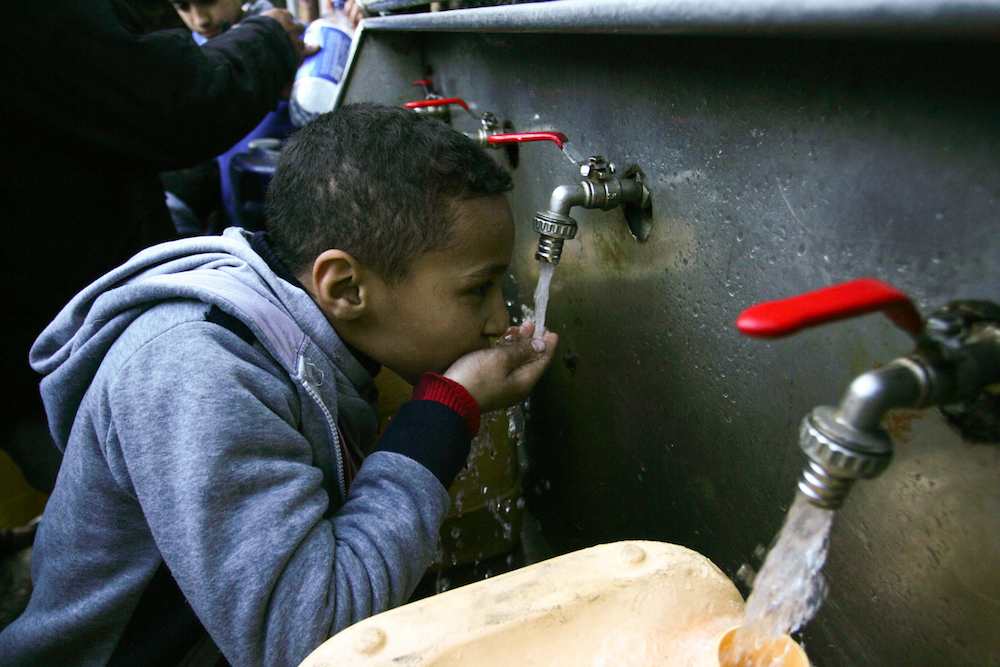
“What’s happening in Palestine is a clear example of one ethno-religious group getting better and preferential resources than another group, purely on the basis of religion and citizenship. The occupation creates a situation in which it is impossible for Palestinians to actually develop these adaptive capabilities to withstand the very imminent threat of climate change,” Agha says.
While the Palestinian Authority’s Environment Quality Authority has put out an adaptation plan supported by the United Nations Development Program, Agha argues that such plans are “almost farcical.”
“Let’s assume the PA has the capacity to plan 40 years in advance, it still doesn’t have the ability to predict what will happen tomorrow. The PA is in a paradox: planning for a future over a land it has no control over. Any way you look at it, it is powerless.”
And yet, Agha believes the PA has a role to play by implementing long-term strategies to try and adapt to the current reality, including directly confronting Israel about its water policies, promoting sustainable agriculture and agro-ecology, and re-establishing the agricultural cooperatives, which represented farmers’ interests and concerns and were popular across the occupied territories in the 1980s.
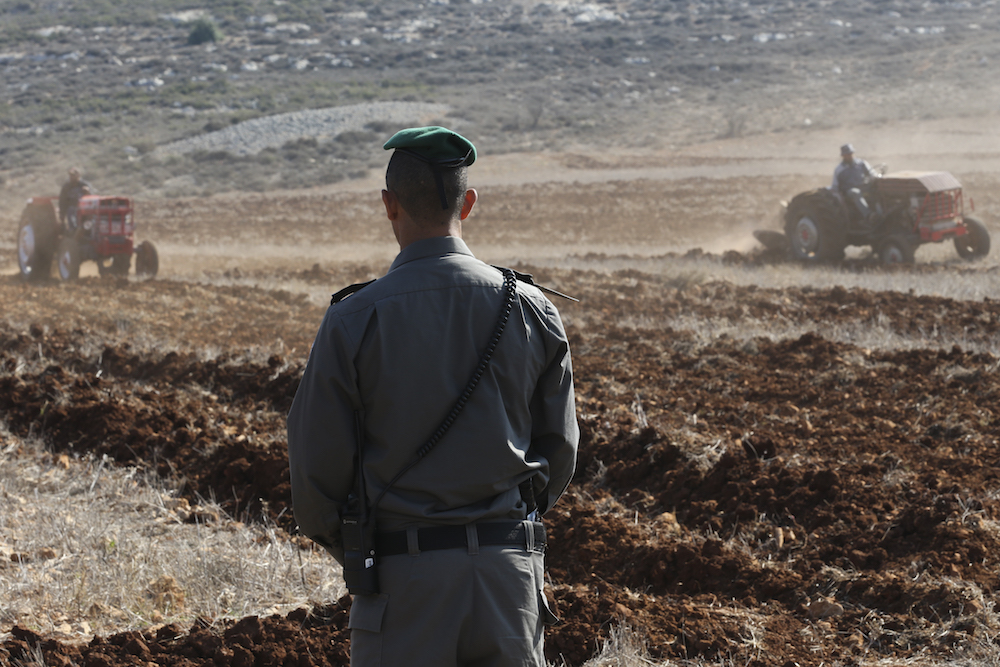
Some Palestinian NGOs and activists are trying to step into that vacuum. The Nature Palestine Society, for instance, is trying to conduct the first comprehensive survey of Palestine’s flora and birds, to better understand the changes in biodiversity as a result of climate change. The Palestine Institute for Biodiversity and Sustainability and the Palestine Museum of Natural History at Bethlehem University are leading a program to conserve the country’s unique biodiversity, and to research complex questions on habitat destruction and environmental decline caused both by climate change and the politics of conflict.
Palestinian activists in the West Bank have established environmental initiatives such as heirloom seed libraries that preserve Palestinian agricultural heritage and biodiversity, and agroecology and community-supported agriculture, in order to promote food sovereignty while minimizing the environmental effects of farming.
A political non-starter
In July 2018, the Israeli government adopted “The National Program for Adaptation to Climate Change,” which includes 30 action items dealing with various aspects of climate change, such as water, energy, and public health. The plan also addresses issues particular to Israel’s political and economic concerns, including adjustments to the climate industry, the possibility of using nuclear energy, and how climate change affects the broader Middle East, including refugees, new trade routes, and food and water scarcity.
Great attention is given to issues of military preparedness. The plan includes recommendations addressing the IDF’s material and strategic needs, which extends from soldiers’ uniforms and the locations of bases, to studying the “effect of climate change on Muslim countries,” and forging mutual aid agreements. The plan, however, does not specify the source of funding for each item, and does not provide the overall projected cost.
Israel’s energy production remains almost entirely based on fossil fuels. In many countries across the world the climate conversation has focused on breaking free of fossil fuel-based energy production — under heavy public pressure, governments such as those of Germany and California have announced a planned shift to 100 percent renewable energy by 2050 — but in Israel the issue remains a political non-starter. In early 2018, the Israeli Ministry of Energy proposed a plan to shift from “polluting fuels” like coal and oil to natural gas. The plan aims to achieve a target of as little as 17 percent of production from renewable energy by 2030, with an interim target of 10 percent by the year 2020.
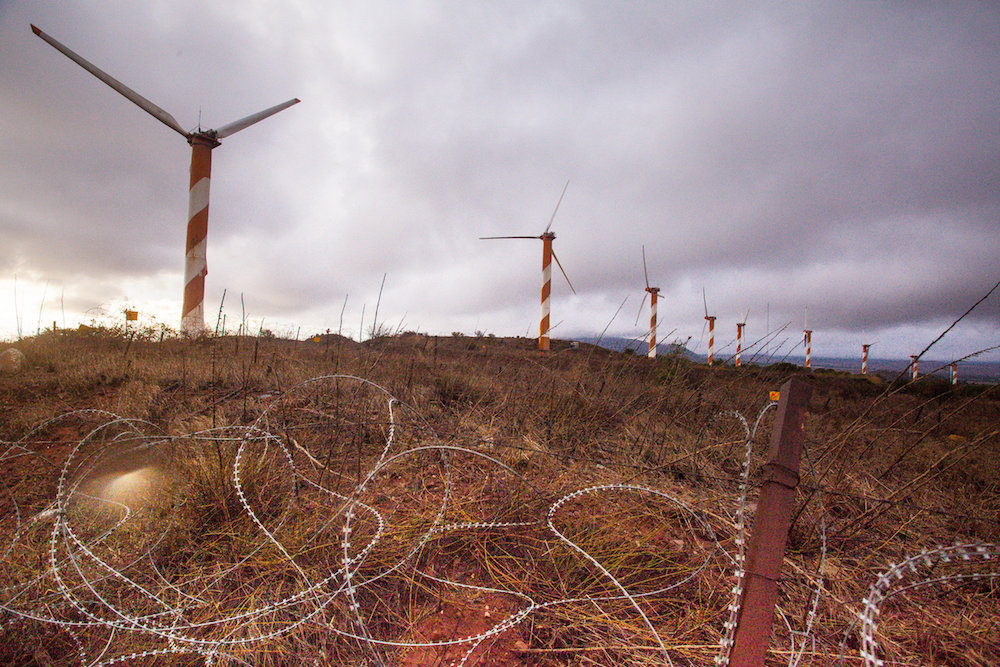
The demand for domestically producing 100 percent renewable energy, however, has opponents even within the Israeli environmental movement. While Green Course, a grassroots environmental group, has taken up the call, the Society for the Protection of Nature in Israel, Israel’s most established environmental organization, takes the position that solar and wind farms pose a threat to the country’s rare and valuable biodiversity — the former destroying the habitats of land animals and the latter killing birds.
“We estimate that solar panels on rooftops and other disturbed or degraded surfaces can supply at least one third of Israel’s energy needs,” says Dror Boymel, head of the planning department at SPNI. “The rest will have to come from elsewhere — either from natural gas, or from other countries in the region with no shortage of space and less vulnerable wildlife.”
‘It’s hard to talk about making this a better place’
A study published by Pew Research Center ahead of Earth Day this year found that only 38 percent of Israelis consider climate change a major threat. Out of the 26 countries surveyed, Israel came in last. The study did not include Palestinians in the occupied territories.
The Israeli environmental movement is shifting gears in accordance. While in the past, environmental groups tended to focus on “light” issues such as recycling, today climate breakdown is at the top of their agenda, with many convinced that only radical action will be able to stop the catastrophe.
“Climate activists are no longer considered ‘cute,’ like they used to be,” says Ya’ara Peretz, head of policy for Green Course. Peretz was one of the central organizers of this year’s Climate March, the largest ever in Israel, which saw several thousands protesting in central Tel Aviv, demanding the Israeli government take immediate action.
“The IPCC report changed everything and pushed people out of their comfort zone,” she says. “We are waking up to the fact that this is serious, and what we’re seeing happen around the world is helping. People want to get involved — now is the time to get creative.”
One of the biggest shifts, says Peretz, is the engagement of young citizens of Israel — both Jewish and Palestinian — who are now leading the movement with the help of activists from Green Course. Taking their cue from Greta Thunberg, the Swedish teenage activist who has become an icon of the fight against climate change, high school students have held several walk-outs and marched to the Knesset, calling on legislators to start taking the issue seriously. “These kids are much smarter than us,” Peretz says.
“I always thought the problems were happening because someone else was making the decisions,” said Lama Ghanayim at an event in Tel Aviv’s Left Bank Club in mid-July. Ghanayim, from the Arab city of Sakhnin in northern Israel, is one of the leaders of the student strikes. “Organizing these strikes was an opportunity to finally lead something. I won’t stand aside and let someone else take the wheel when it comes to such a critical issue,” Ghanayim said.
Veteran environmental groups such as Green Course and SPNI are no longer the only voices addressing climate in Israel. The direct-action movement Extinction Rebellion recently started a branch in Israel. The Israeli left-wing movement Standing Together, which until now focused primarily on fighting racism, the occupation, and supporting workers rights, recently adopted climate change as a central issue in its platform.
“There was a sense among activists that when they go from climate protests to peace protests, they see totally different faces,” says Ilay Abramovitch, an activist in Standing Together. “They simply aren’t the same people. But if you look around the world, you’ll see that most left-wing parties do have climate at the top of their agenda.”
Abramovitch says his organization’s vision is based on the idea that any struggle against climate change must be undertaken in conjunction with labor unions and Palestinian groups. “We believe that when the environment is harmed, people are harmed, and those who are most at risk are the poorest segments of society and the poorest countries. Our struggle must be regional, and of course it must be a Jewish-Arab struggle.”
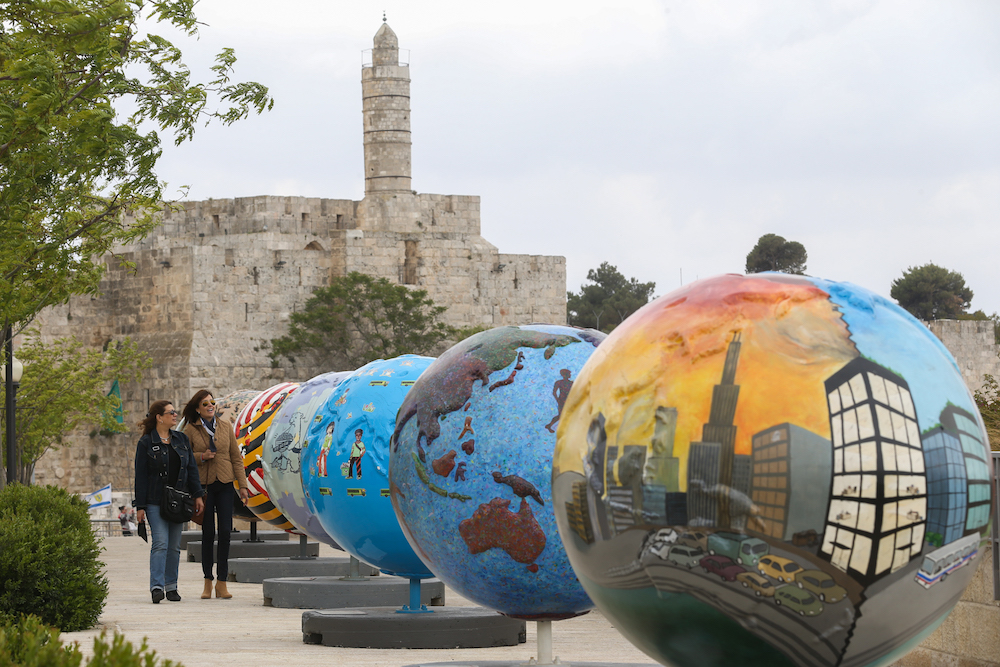
But whereas joint Arab-Jewish work on climate issues comes naturally to activists like Ghanayem and Abramovich, who are citizens of Israel, Palestinian activists and academics in the West Bank face a much more complicated decision. While they realize that regional planning is unavoidable, they are concerned that any discussion of partnering with Israelis on climate issues that does not address the occupation will serve to normalize a political situation in which Palestinian communities are most vulnerable to climate change.
But even on the Israeli left, joining forces with the environmental movement doesn’t always seem like a natural fit. “Some people ask, ‘What does the left have to do with the environmental movement? Why won’t you let us continue fighting the occupation?” Abramovitch says. “People don’t entirely understand the opportunity that we have for creating a larger struggle as we grapple with climate breakdown.”
Peretz says that despite her optimism, it is still difficult to get Israelis, even those involved in other social justice struggles, to view climate change as an immediate threat. “The environmental struggle is seen as a struggle of the privileged, especially when so many believe that nothing is more important than our national security,” she says. “It’s hard to talk to people about making this a better place. The mentality is that we should just be grateful we have a state of our own — whether or not it’s a good or just state is secondary.”

